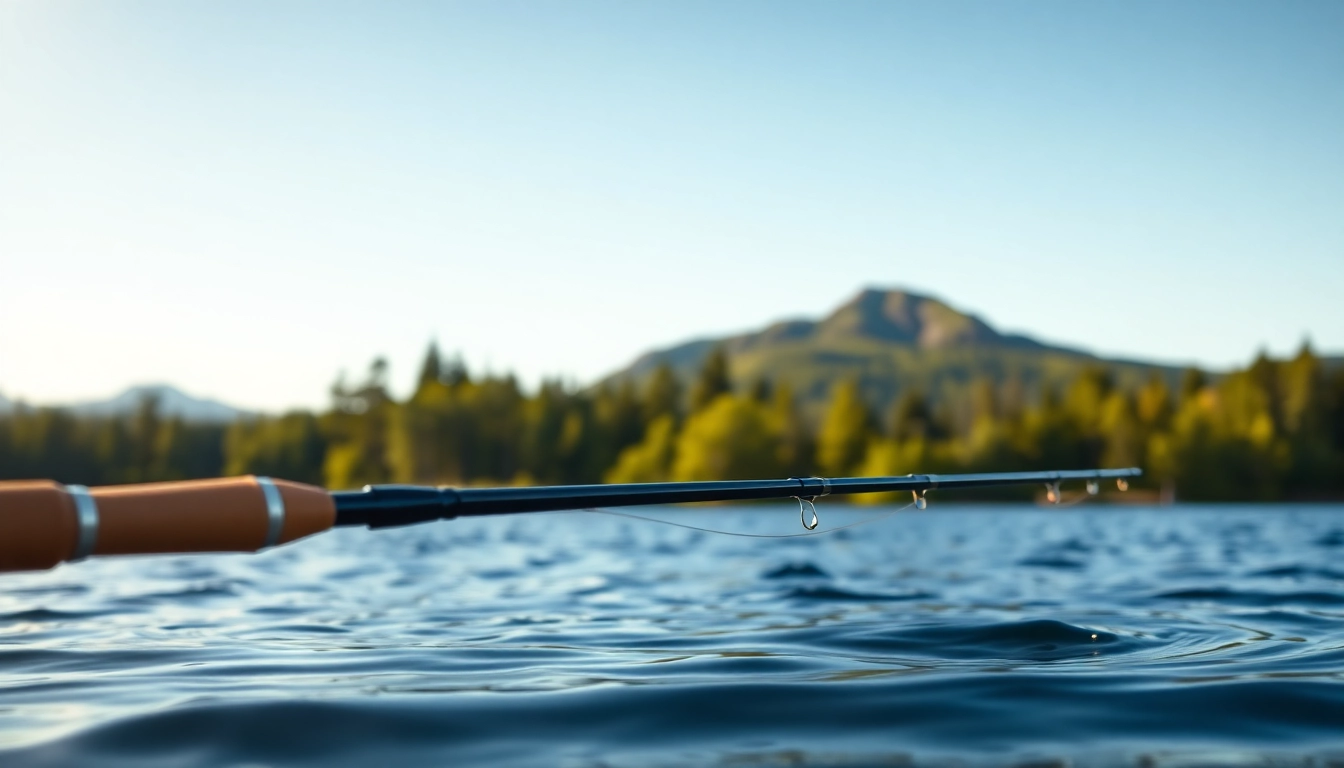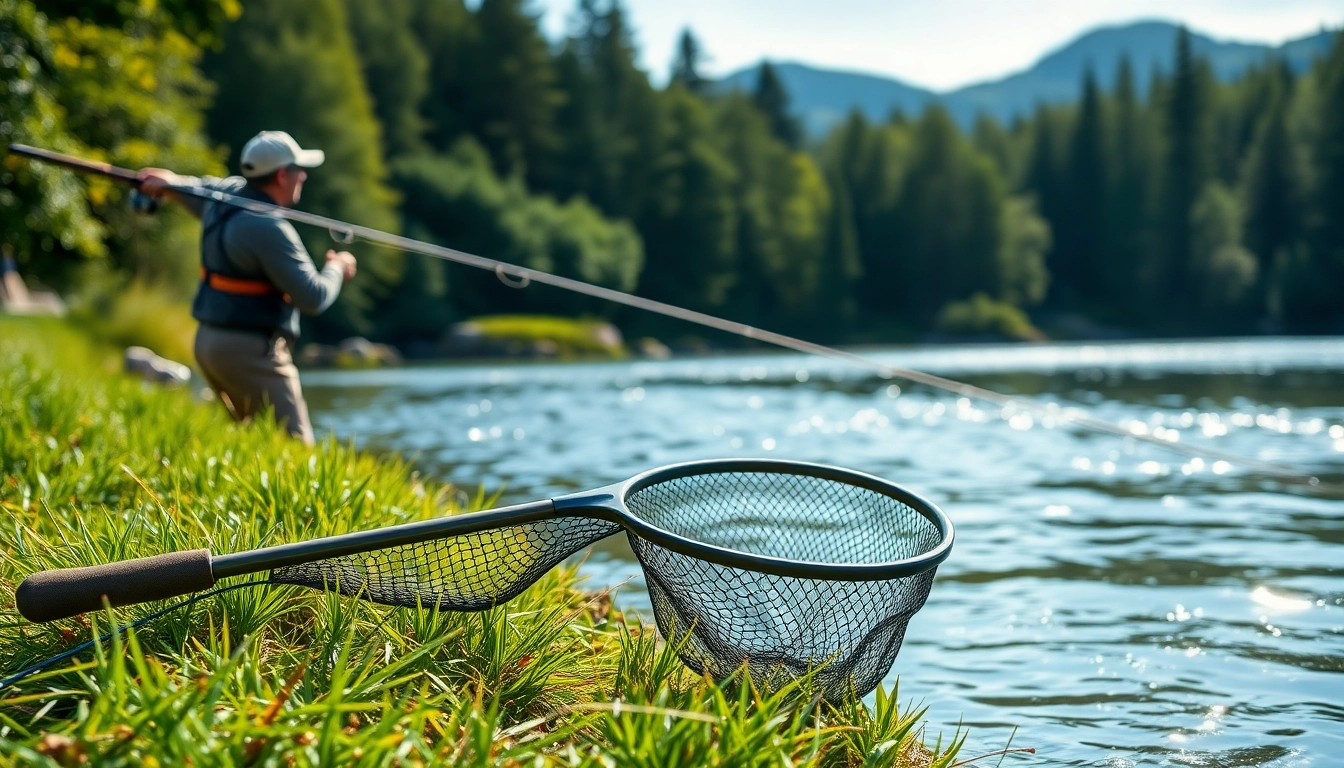Understanding the Basics of Fly Fishing Combo
What is a Fly Fishing Combo?
A fly fishing combo is a complete package that includes all the essential components needed to start fly fishing. It typically consists of a fly rod, fly reel, and fly line, offering anglers convenience and compatibility. For beginners, a fly fishing combo is particularly valuable because it removes the complexity of choosing the right individual pieces of equipment. The idea is to provide everything an angler needs to fish effectively without the trial and error often associated with assembling a complete setup.
Key Components of a Fly Fishing Combo
Understanding the essential components of a fly fishing combo helps anglers appreciate what they are purchasing. There are three primary elements:
- Fly Rod: The fly rod is the backbone of the setup. It is designed to be lightweight and sensitive, allowing for the precise casting of fly lines. Rods come in different lengths and weights, suited to various fishing environments and species.
- Fly Reel: The reel holds the fly line and provides a smooth return mechanism. Fly reels vary by size and retrieve ratio, affecting how anglers control fish during the fight.
- Fly Line: The fly line is thicker and heavier than regular fishing line, designed to carry flies through the air. Different types of fly lines serve various purposes—floating lines, sinking lines, and intermediate lines cater to different fishing techniques.
Benefits of Using a Fly Fishing Combo
Choosing a fly fishing combo offers several advantages, especially for novice anglers:
- Simplicity: A combo simplifies the buying process, eliminating confusion about compatibility and performance.
- Cost-Effective: Typically, purchasing a combo is less expensive than buying components separately.
- Optimal Matching: Components are usually well-matched for performance, enhancing the overall fishing experience.
Types of Fly Fishing Combos Available
Beginner Fly Fishing Combos
Beginner fly fishing combos are designed with the novice angler in mind. They generally feature user-friendly rods, reels, and lines that are forgiving during casting. These combos often include instructional materials to help new anglers get started, making them an excellent choice for those just entering the sport. Features of beginner combos typically include:
- Medium Action Rods: These rods offer a balanced flex, which is ideal for learning proper casting techniques.
- Standard Reels: Beginner reels are usually uncomplicated, focusing on ease of use rather than advanced features.
- Pre-Spooled Lines: Most beginner combos come with the line already spooled, further simplifying the initial setup.
Intermediate Fly Fishing Combos
For the intermediate angler, the fly fishing combo focuses on enhancing performance and versatility. These kits often feature better-quality materials and tailored configurations that allow for more specific fishing styles and targets. Key characteristics may include:
- Higher Sensitivity Rods: Intermediate rods allow for greater feedback and sensitivity, crucial for detecting strikes.
- Improved Reel Systems: These reels often include drag systems that better accommodate a variety of fish species.
- Variety of Line Weights: Intermediate combos may provide options for different fly lines, supporting various fishing conditions.
Advanced Fly Fishing Combos
Advanced fly fishing combos cater to serious anglers who want high-performance gear tailored to specific fishing tactics and environments. These combos tend to include premium materials and cutting-edge technology, such as:
- Specialized Rods: These rods can be designed for specific casting techniques or target species, such as streamers or dry flies.
- Precision Reels: Advanced reels may offer more sophisticated drag systems, enhancing control during a fight.
- Custom Lines: Higher-end combos may allow anglers to select fully customized line options based on fishing conditions.
How to Choose the Best Fly Fishing Combo for Your Needs
Consider Your Skill Level
Your skill level is one of the most important factors in selecting the right fly fishing combo. Beginners should focus on user-friendly gear that promotes learning, while more experienced anglers may prioritize performance and customizability. Assessing your skills will help narrow down your choices significantly:
- Beginner: Look for a simple, complete combo that requires minimal setup and can handle a variety of conditions.
- Intermediate: Select a combo that offers versatility and accepts upgrades for line and leader based on your evolving skills.
- Advanced: Choose premium gear tailored to your specific fishing preferences and local environments.
Assessing Target Fish Species
Identifying the fish species you plan to catch is crucial in determining the right setup. Different species require different techniques, lines, and flies:
- Trout: Generally well-suited for a range of fly fishing combos that focus on lightweight, sensitive setups.
- Bass: Look for a combo with a stronger rod and reel setup to handle dense cover situations.
- Saltwater Species: These require specialized gear that can withstand corrosion and handle larger fish fights.
Evaluating Budget and Brand Options
Your budget will play a significant role in your gear selection. Fly fishing combos range from affordable to high-end, and understanding your financial limits will help frame your choices:
- Budget Options: Many brands offer excellent beginner kits that deliver good quality without breaking the bank.
- Mid-Range Choices: For intermediate anglers, investing a little more can yield significant upgrades in performance and durability.
- Premium Gear: Advanced anglers might consider top-tier brands offering specialized setups for tailored fishing experiences.
Maintenance Tips for Your Fly Fishing Combo
Cleansing and Storing Your Equipment
Proper care is essential to prolonging the life and performance of your fly fishing combo. Regular cleaning and appropriate storage are critical components:
- Post-Fishing Cleaning: Always rinse your rod, reel, and line with freshwater after fishing, particularly in saltwater environments.
- Storage: Store your equipment in a cool, dry place, ideally in a protective case to avoid damage.
- Periodic Inspections: Regularly check for any signs of wear and tear, and clean your reel’s drag system for optimal performance.
Identifying Wear and Tear
Every angler should be aware of signs that indicate maintenance or replacement might be necessary:
- Rod Damage: Look for cracks, fractures, or bends in the rod which impact performance.
- Reel Performance: Pay attention to the sound and smoothness of the reel; any unusual noise or hesitation could signal a need for repair.
- Line Condition: Check your line for abrasions or nicks that could cause failures during casting or fighting fish.
Upgrading Components for Performance
As your skills improve, you may wish to enhance your fly fishing experience by upgrading certain components:
- Line Upgrades: Switching to a higher quality or specialized line can significantly improve your casting distance and accuracy.
- Reel Enhancements: Upgrading to a better reel can enhance drag performance and reduce weight during long fishing trips.
- Rod Customization: Many anglers invest in premium rods tailored to their specific fishing needs, offering greater sensitivity and responsiveness.
Common Mistakes to Avoid When Using a Fly Fishing Combo
Neglecting to Match Rod and Reel
One of the most common mistakes is failing to match the rod and reel appropriately. Here are some guidelines:
- Weight Compatibility: Ensure that your reel is suited for the rod weight you are using. This balance is crucial for casting performance and fish control.
- Action Matching: Both the reel and rod should offer similar actions to work harmoniously, ensuring effective retrieval and fighting techniques.
Ignoring Line Selection
Choosing the right line for your fly fishing combo is equally important. Ignoring this aspect can lead to missed opportunities:
- Line Weight: Always match your fly line’s weight with your rod’s specifications for optimal performance.
- Type of Line: Depending on your fishing method (e.g., nymphing, dry fly fishing), select the appropriate line type that suits your needs.
Overlooking Local Regulations
It’s crucial to familiarize yourself with local fishing regulations, as they vary widely. Common pitfalls include:
- Seasonal Restrictions: Many waterways have fishing seasons that dictate when you can fish.
- Limitations on Equipment: Certain areas may restrict tackle types or sizes, so always check local rules before heading out.
- Catch and Release Policies: Some locations may have specific requirements related to catch-and-release practices that should be observed.



